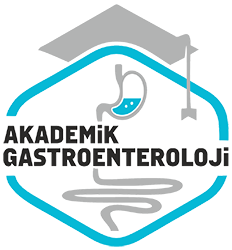Aralik 2016
Üst gastrointestinal obstrüksiyonunun nadir bir nedeni: Süperiormezenterik arter sendromu; çok kesitli bilgisayarli tomografibulgulari
A rare cause of upper gastrointestinal obstruction: Superior mesenteric artery syndrome;multidetector computed tomography findings
- Ana Sayfa
- Sayılar
- Aralik 2016
- Üst gastrointestinal obstrüksiyonunun nadir bir nedeni: Süperiormezenterik arter sendromu; çok kesitli bilgisayarli tomografibulgulari...
Özet
Giriş ve Amaç:Süperior mezenter arter sendromu, üst gastrointestinal obstrüksiyonun nadir bir nedenidir. Bu sendrom, aorta ile süperior mezenter arter arasındaki mesafenin daralmasi sonucu duodenum üçüncü parçasinin kompresyonu ile karakterizedir. Bu çalışmanın amacı süperior mezenter arter sendromunun çok kesitli bilgisayarli tomografi bulgulari- ni tanımlamaktir. Gereç ve Yöntem: Süperior mezenter sendromunun klinik semptomları ve dogrulayici bilgisayarli tomografi bulgulari olan sekiz olgu çalışmaya dahil edildi. Multiplanar ve üç-boyutlu çok kesitli bilgisayarli tomografi görüntüleri retrospektif olarak değerlendirildi ve aortomezenterik açi ve aortomezenterik mesafe ölçüldü. Bulgular: Abdominal bilgisayarli tomografi incelemelerimizdeki süperior mezenter arter sendromu sikligi %0,036 olarak saptandi. Tüm olgularda çok kesitli bilgisayarli tomografide duodenum üçüncü kesiminde aort ile süperior mezenter arter arasında ani daralma ve proksimal duodenum ile midede dilatasyon izlendi. Sagittal ve aksiyal görüntüler aortomezenterik açida (olgulardaki ortalama açi 13,8 derece, sinirlar 5-25 derece) ve aortomezenterik mesafedeki (olgulardaki ortalama 3,8 mm sinirlar 2,9-7,5 mm) daralmayi gösterdi.Sonuç: Çok kesitli bilgisayarli tomografi, süperior mezenter arterin yaptigi duodenal kompresyonun direk gö- rülmesini saglar ve süperior mezenter arter sendromundaki bilgisayarli tomografi kriterleri olan aortomezenterik açi ve mesafedeki azalmayi dogrulamada kullanilabilir.
Abstract
Background and Aims: Superior mesenteric artery syndrome is a rare cause of upper gastrointestinal obstruction. This syndrome is characterized by compression of the third portion of the duodenum due to narrowing of the space between the superior mesenteric artery and the aorta. The aim of this study was to describe the multidetector computed tomography findings of superior mesenteric artery syndrome. Materials and Methods: Eight patients with clinical symptoms and correlative computed tomography evidence of superior mesenteric artery syndrome were included in this study. Axial, multiplanar, and three-dimensional multidetector computed tomography images were retrospectively reviewed, and the aortomesenteric angle and aortomesenteric distance were measured. Results: The frequency of superior mesenteric artery syndrome was found to be 0.036% in our abdominal computed tomography scans. In the eight patients, multidetector computed tomography demonstrated gastric and proximal duodenal dilatation with abrupt narrowing of the third portion of the duodenum between the aorta and superior mesenteric artery . Sagittal and axial images demonstrated decreased aortomesenteric angle (mean 13.8°, range 5?25°) and distance (mean 3.8 mm, range 2.9?7.5 mm) in all the eight patients. Conclusion: Multidetector computed tomography enables direct visualization of the duodenal compression by the superior mesenteric artery, which can be used to confirm the computed tomography criteria of decreased aortomesenteric angle and distance in superior mesenteric artery syndrome.



